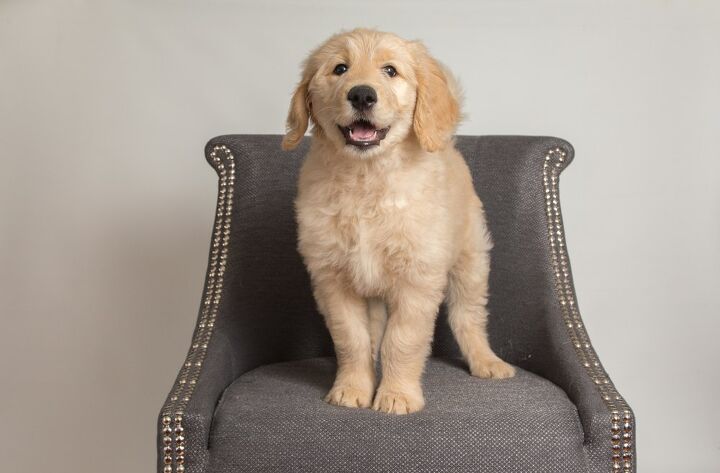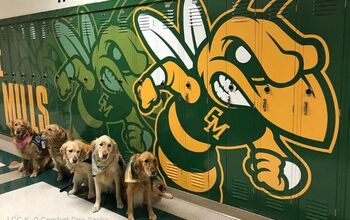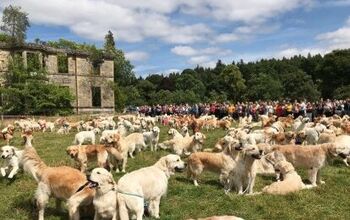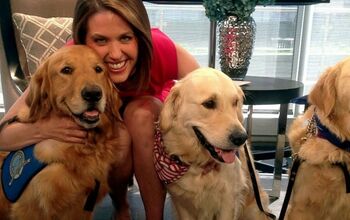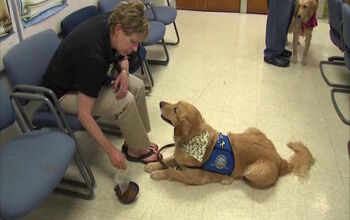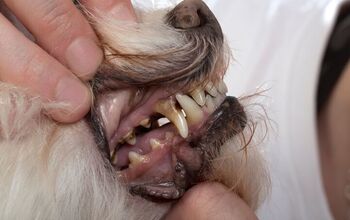Comfort Retriever


About Comfort Retriever
The Comfort Retriever is a fun-loving mixture of the gentle Golden Retriever, loyal Cocker Spaniel and playful Poodle. Together, you have a great family dog that is super smart, easy to train and devoted to his family. This pooch is a true outdoorsy type animal who thrives on being involved in all family activities.
The Comfort Retriever is a fun family dog that brings together the Golden Retriever, Cocker Spaniel and Poodle.
Although Comfort Retrievers come with some impressive family history – the Golden Retriever dates back to the mid-1800s America, the Cocker Spaniel to 19th century United Kingdom and the Poodle to Germany in the 1400s – he himself goes back only to the turn of the 21st century. Designer dogs have been developed by breeders to help not only cancel out some of the more common health issues of pure-bred dogs but to create smaller, gentler and sometimes hypo-allergenic variations on a popular breed.
While the Comfort Retriever’s multi-breed background means he isn’t eligible to join the American Kennel Club (AKC) roster of purebreds all three of his parent breeds are members: the Golden Retriever joined the “sporting” group in 1925, the Poodle become a member of the “non-sporting” group back in 1887 while the Cocker Spaniel was named to the club’s “sporting” group in 1946.
The Comfort Retriever is an active boy who will need his food to be nutrient-rich to help him keep up with his busy day. Because all 3 parent breeds bring the potential of joint issues later in life, be extra diligent about maintaining an ideal weight with this pooch. Obesity can be a problem down the line and for that reason plan to feed him 2 to 3 smaller meals each day versus allow him to free feed. Because the Poodle side of this dog may bring digestive issues including bloat, don’t plan exercise immediately after a meal.
The Comfort Retriever thrives on human interaction and being involved in family activities.
The Comfort Retriever comes from three highly intelligent breeds that are typically people-pleasers and are quick to pick up on and obey commands. That said, the wilful little Cocker Spaniel may present in his personality so ensure your approach is firm, consistent and establishes pack leadership early on. This pooch will do best with lots of praise and rewards when he does a job well.
Once fully grown, the Comfort Retriever can weigh between 25 and 45 pounds depending on which parent breeds he takes after.
The Comfort Retriever is eager to please and gets along well with children and other pets. He thrives on human interaction and being involved in family activities. Because he is both smart and high energy, effort will be needed to meet his physical needs to avoid him becoming bored and taking on bad behaviors such as barking or chewing. This is a loyal dog who bonds quickly and makes an ideal companion or therapy dog. Be aware that he could inherit the Cocker Spaniel’s wilful nature which needs to be addressed early on.
While Comfort Retrievers have no known health issues that are specific to the dog, they do come from three different pure-breed dogs and each can be prone to specific issues that may or may not be passed down the gene pool. With the Comfort Retriever, he may inherit the Poodle’s tendency toward digestive issues and von Willebrand’s disease, the Cocker Spaniel’s liver issues and the Golden Retriever’s propensity toward certain types of cancer. And from all three breeds, joint issues including hip and elbow dysplasia.
The Comfort Retriever will live for between 12 and 14 years.
The Comfort Retriever comes from three breeds that are active and considered “outdoorsy” dogs. As a result, he will need regular daily exercise that includes not only walks but opportunities to show off his agility skills including catching tossed balls or frisbees in your backyard or dog park. As it relates to leash free zones, regular visits are a great idea as it allows your Comfort Retriever to burn off excess energy and socialize with other animals and people.
The eager-to-please Comfort Retriever gets along with kids and other pets.
Also known as a Miniature Golden Retriever, Golden Cavalier and Mini Golden Retriever, the Comfort Retriever’s multi-breed status means he isn’t eligible to join the American Kennel Club however he is recognized by the Designer Dogs Kennel Club (DDKC) and the Dog Registry of America, Inc. (DRA).
While the Comfort Retriever brings the hypo-allergenic, non-shedding characteristics of the Poodle into the mix, it’s unlikely you will be able to get away with minimal maintenance for this pooch. Both the Golden Retriever and Cocker Spaniel are heavy shedding dogs which means you can expect to brush your dog two to three times a week to keep his coat looking its best and the fur in check. On the upside, unlike the Poodle he will typically not require professional grooming. Because floppy eared dogs are prone to ear infection, make sure to inspect and clean his ears weekly.
Because the Comfort Retriever brings three different breeds into the mix and each in turn may bring specific health concerns, it’s important that health testing be done prior to adoption. Your pup may also inherit a little of the Cocker Spaniel’s stubborn nature so be sure to begin his socialization and obedience training early so that he knows how to play nice with others.

Sharing space with three seriously judgy Schnoodles and a feline who prefers to be left alone. #LivingMyBestLife
More by Mary Simpson



